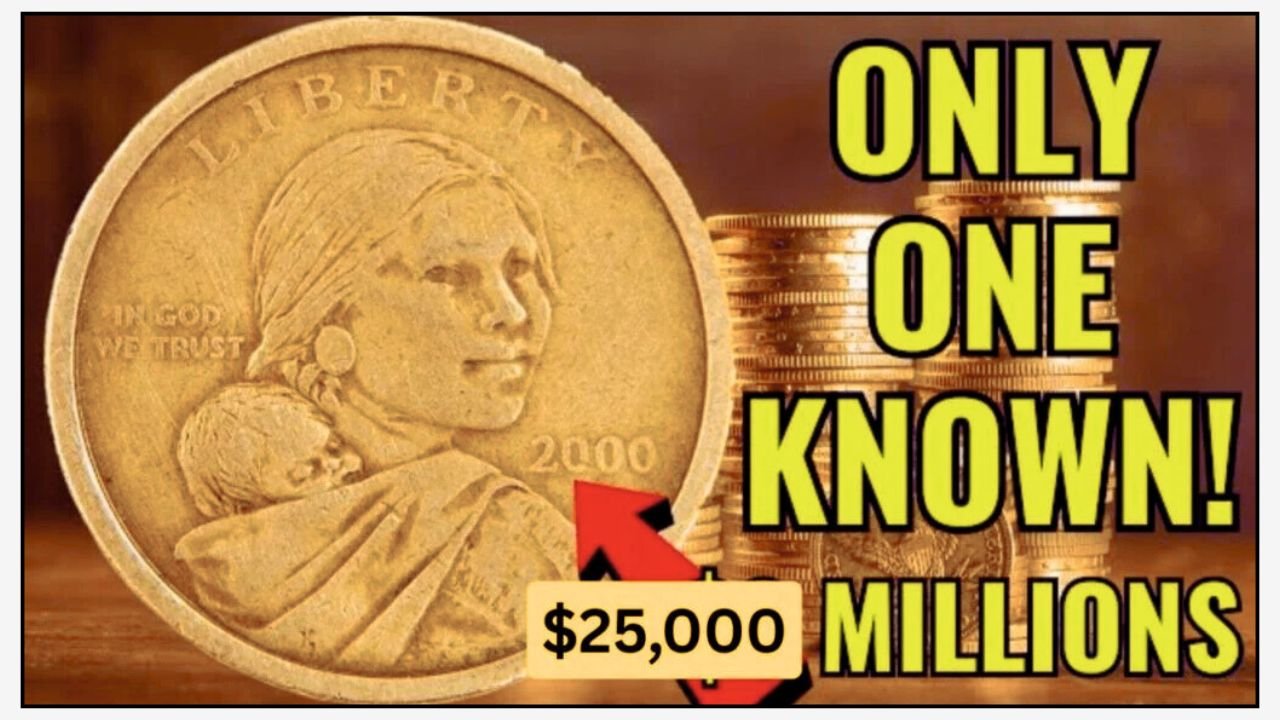Sacagawea Dollar: A single dollar coin could change your life! A rare 2000 Sacagawea dollar, nicknamed the “Cheerios Dollar,” just sold for an incredible $25,000 at a 2025 auction, sparking excitement among coin collectors and everyday folks alike. This golden coin, tucked into Cheerios cereal boxes back in 2000, has a special design that makes it a treasure. With only a few known to exist, it’s a reminder that a fortune might be hiding in your change jar. Here’s why you should check your coins now!
A Cereal Box Surprise
Back in 2000, the U.S. Mint teamed up with General Mills to promote the new Sacagawea dollar, a golden coin honoring the Shoshone woman who helped the Lewis and Clark expedition. As part of the fun, 5,500 of these coins were hidden in Cheerios boxes across the U.S. At the time, people thought they were just regular dollar coins. But years later, collectors discovered something special: some of these coins had a unique eagle design on the back, making them super rare.
What Makes the Cheerios Dollar Special?
The Cheerios Dollar stands out because of its reverse side, often called the “Reverse of 1999.” Unlike regular Sacagawea dollars, it has extra-detailed tail feathers on the eagle, with a raised central line in the feather shaft. This design was a prototype, used only in the Cheerios promotion, and not all coins in the boxes had it. Experts believe only 60 to 70 of these special coins are known, with just 107 certified by the Professional Coin Grading Service (PCGS) and two by the Numismatic Guaranty Corporation (NGC). This rarity drives their value sky-high.
| Feature | Cheerios Dollar | Regular Sacagawea Dollar |
|---|---|---|
| Year | 2000 | 2000 |
| Mint Mark | P (Philadelphia) | P or D |
| Eagle Tail Feathers | Enhanced, detailed with raised central line | Smoother, recessed central line |
| Estimated Value | $5,000–$25,000+ | $1–$8 (unless in top condition) |
A Big Payday at Auction
The $25,000 sale happened at a Heritage Auctions event in January 2025, where a Cheerios Dollar graded MS-68 by PCGS—a near-perfect score—drew bids from collectors nationwide. This coin, still in its original Cheerios packaging, shone with a bright, lustrous finish, boosting its appeal. Past sales have hit even higher, with one coin fetching $29,900 in 2008. These prices show the coin’s value stays strong, especially as more people learn about its rarity.
How to Spot a Cheerios Dollar
Want to check if you have a treasure? Look for a 2000 Sacagawea dollar with a “P” mint mark (for Philadelphia). Then, flip it over and inspect the eagle’s tail feathers. The Cheerios version has sharper, more defined feathers compared to the smoother ones on regular coins. A magnifying glass can help you spot the difference. If you think you’ve got one, don’t clean it—cleaning can lower its value. Take it to a trusted coin dealer or grading service like PCGS or NGC for authentication.
Why Collectors Love It
The Cheerios Dollar isn’t just about money—it’s a piece of history. The coin’s link to Sacagawea, a key figure in American exploration, adds emotional weight. Plus, the quirky story of finding a valuable coin in a cereal box captures imaginations. With only a few dozen certified, the hunt for these coins feels like a modern treasure chase. Social media is buzzing with collectors sharing tips on X, urging people to check old coin jars or ask family for spare Sacagawea dollars.
Could You Have One?
Here’s the exciting part: some Cheerios Dollars are still out there! Since many were spent or tossed into drawers, you might find one in your change, at a flea market, or in a bank roll. Collectors suggest checking rolls of dollar coins from banks or digging through old collections. One lucky person in Ohio found a Cheerios Dollar in a family coin jar, proving these coins can hide in plain sight.
A Reminder to Look Closely
The Cheerios Sacagawea Dollar shows that everyday items can hold big surprises. With values ranging from $5,000 to $25,000 or more, it’s worth taking a second look at your coins. Next time you get a golden dollar in change, flip it over and check those tail feathers—you might just be holding a small fortune. So, grab a magnifying glass and start hunting. Who knows? Your change could be the next big find
